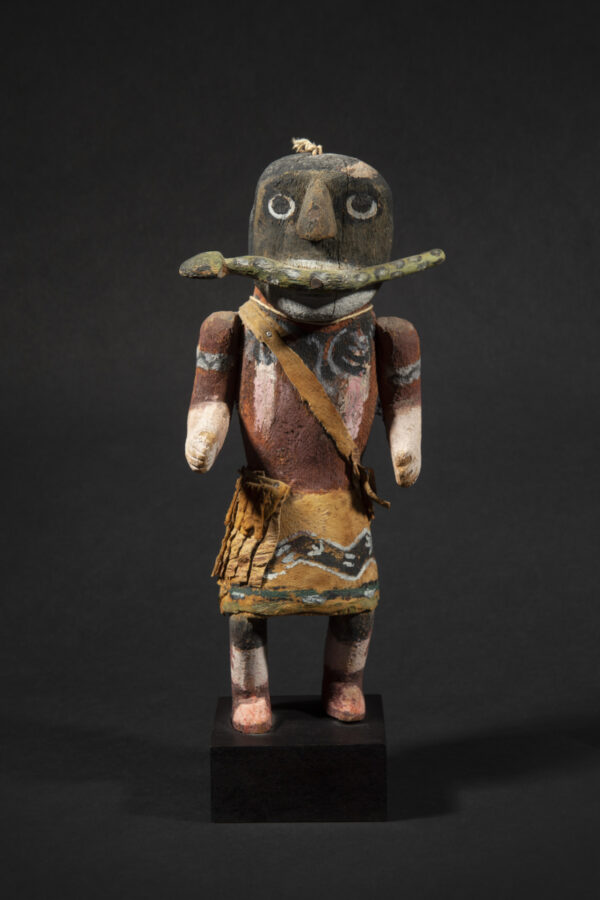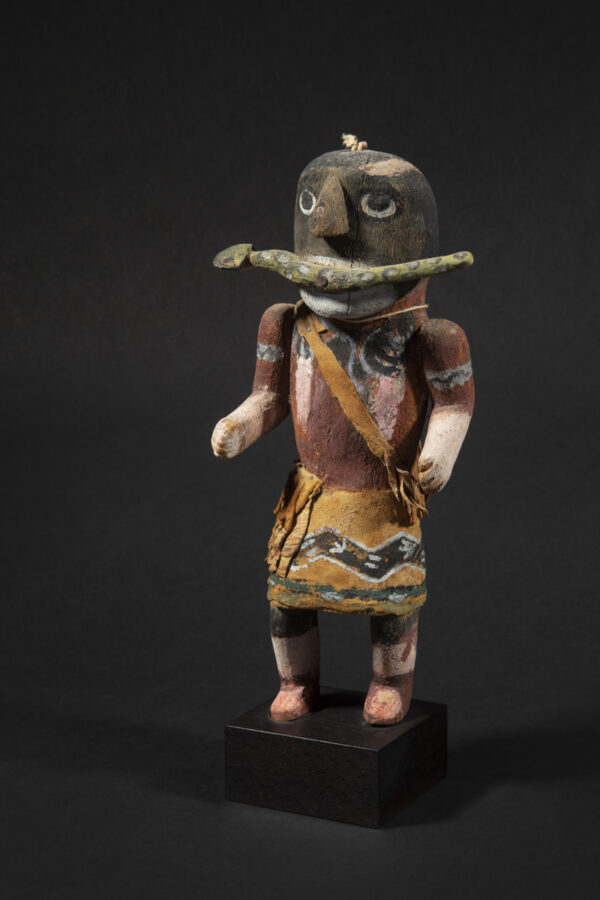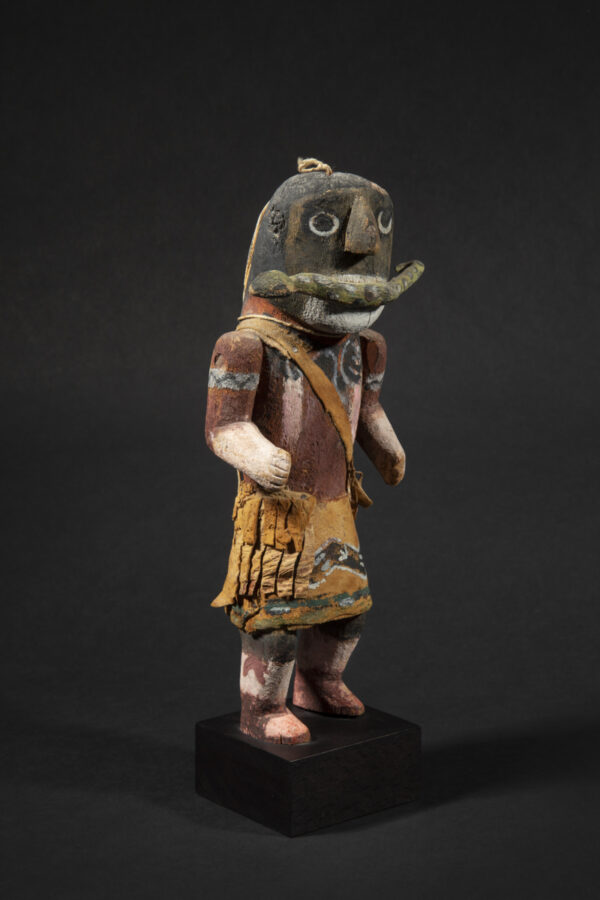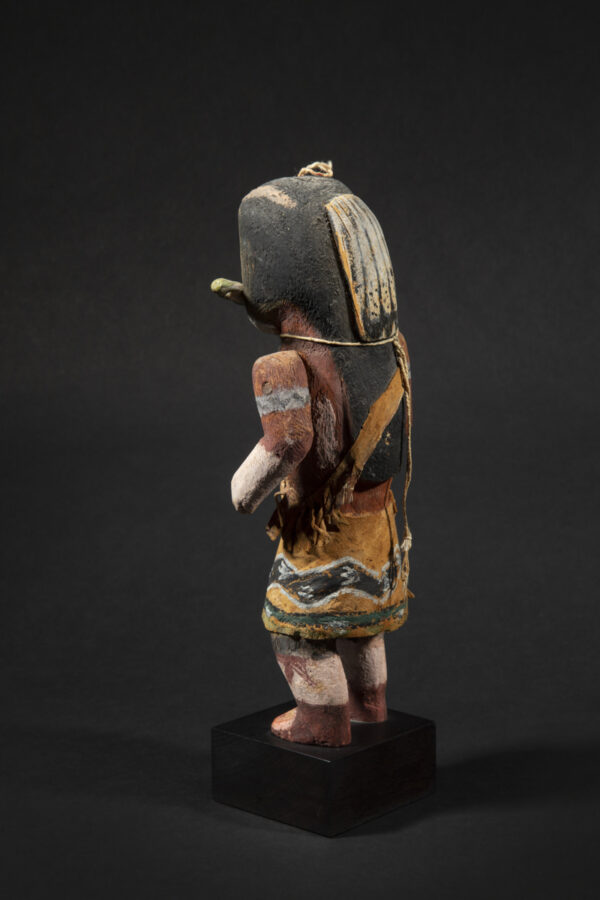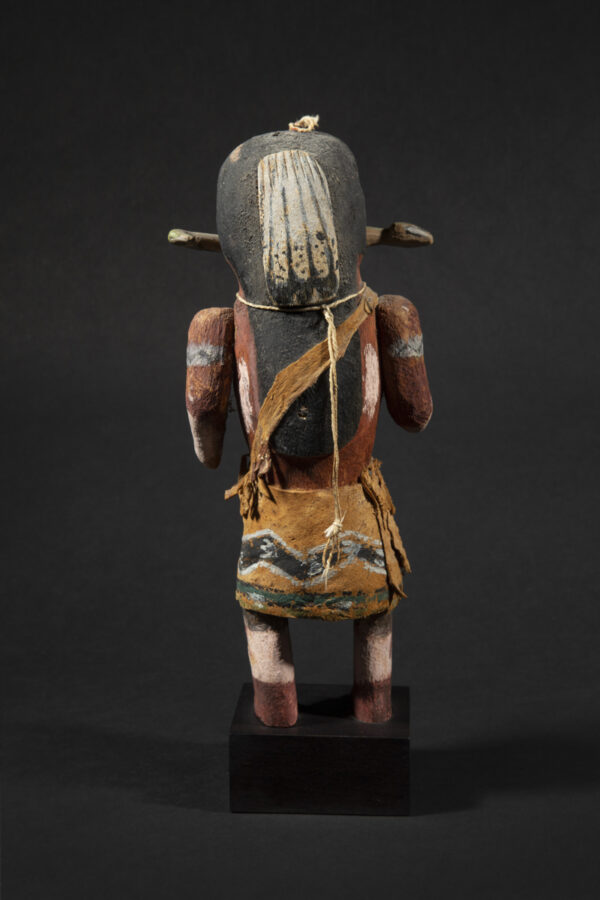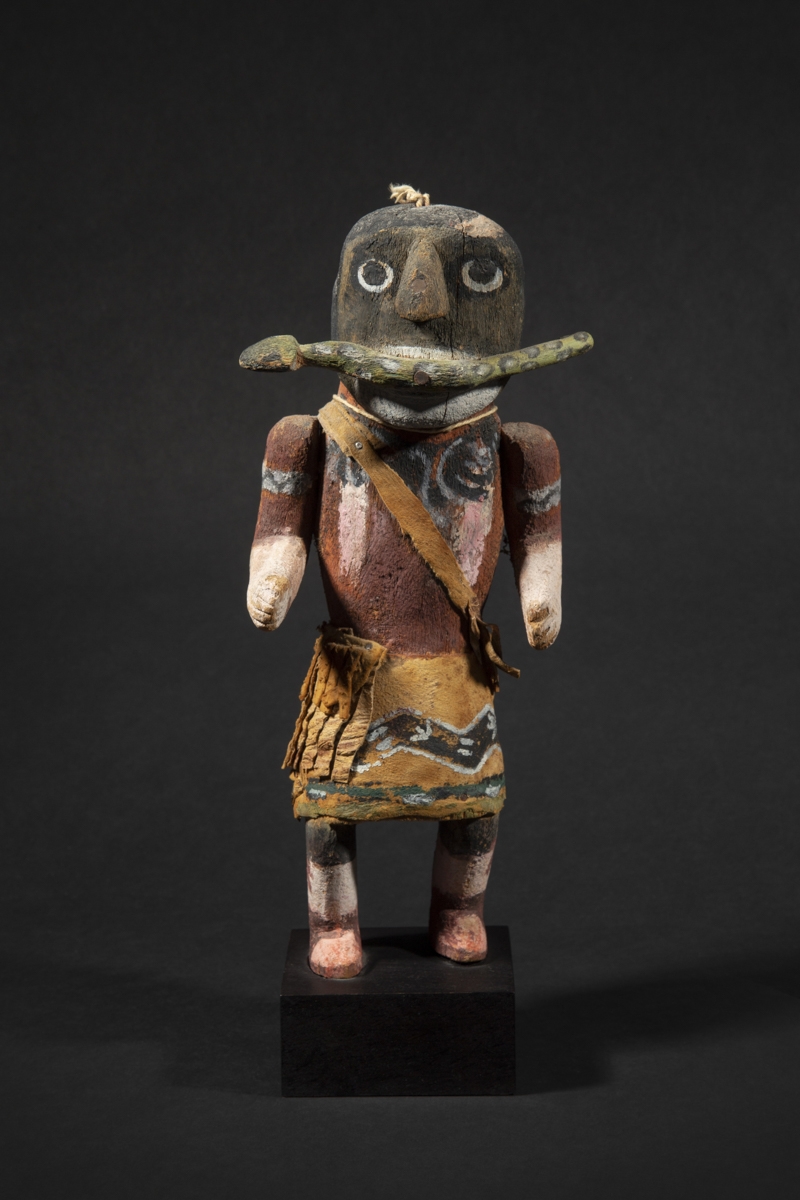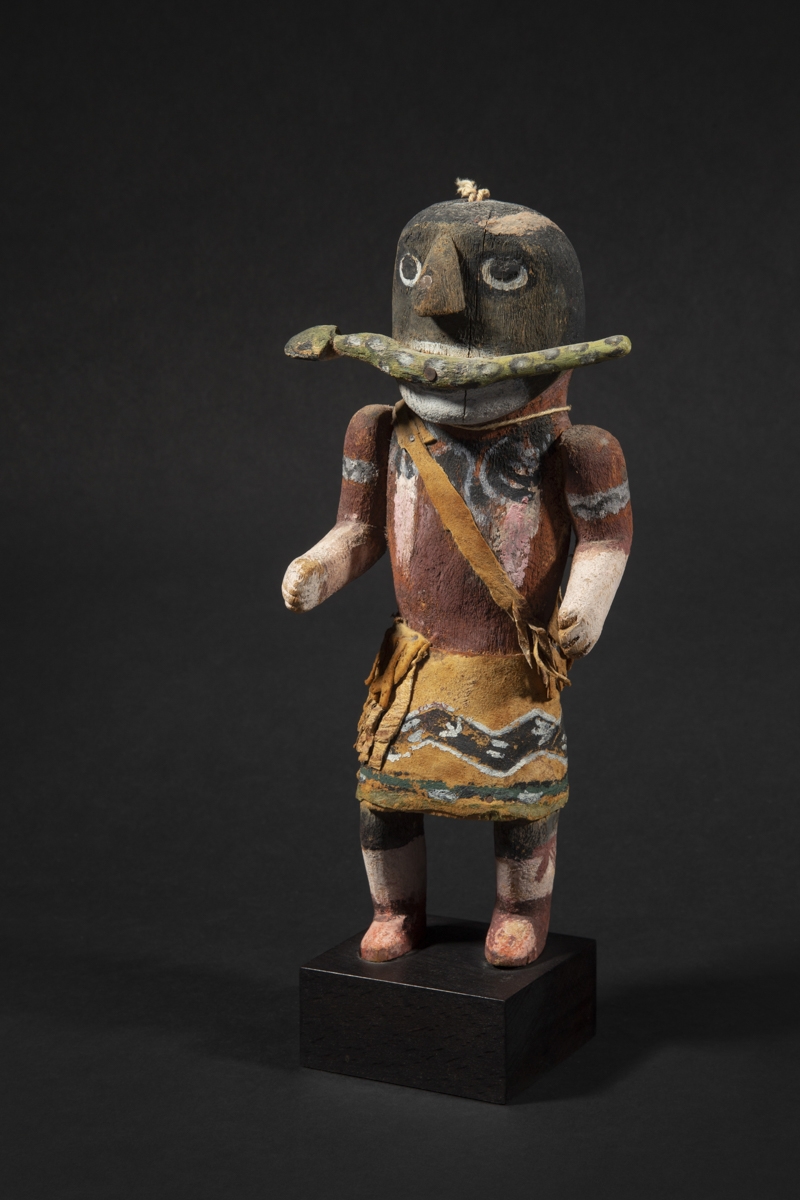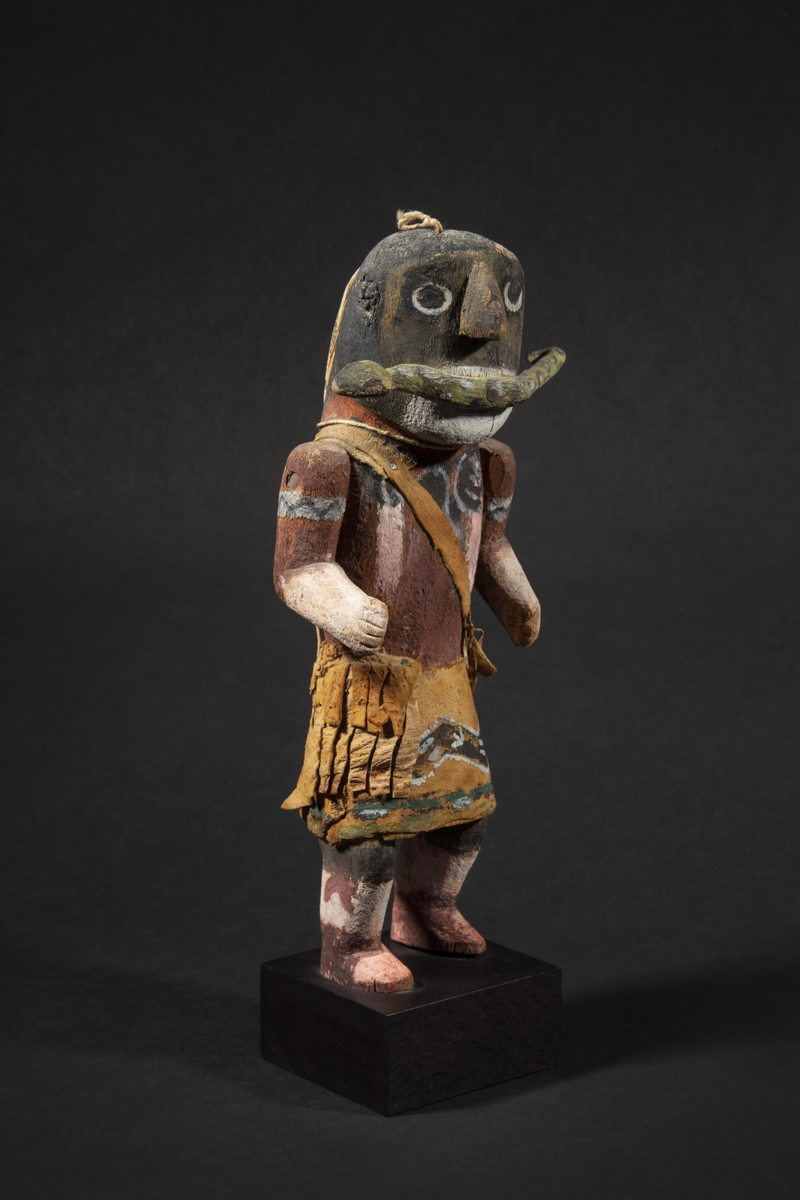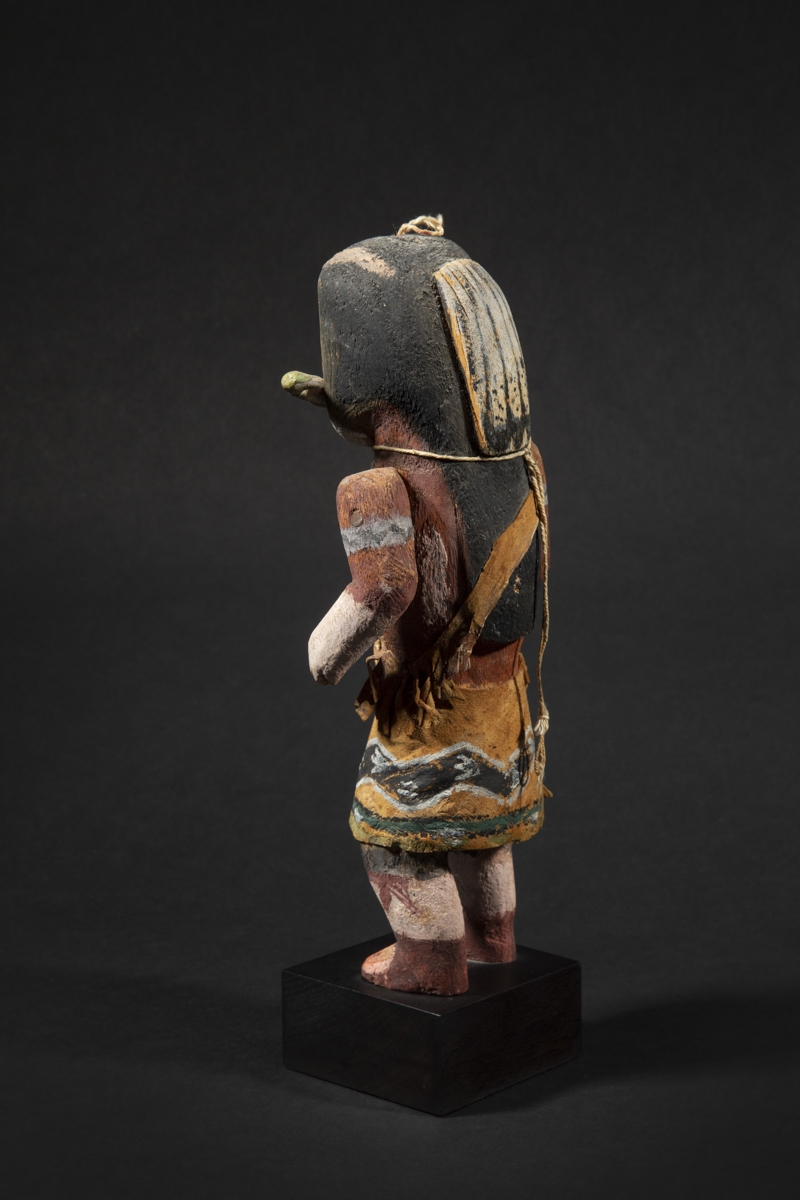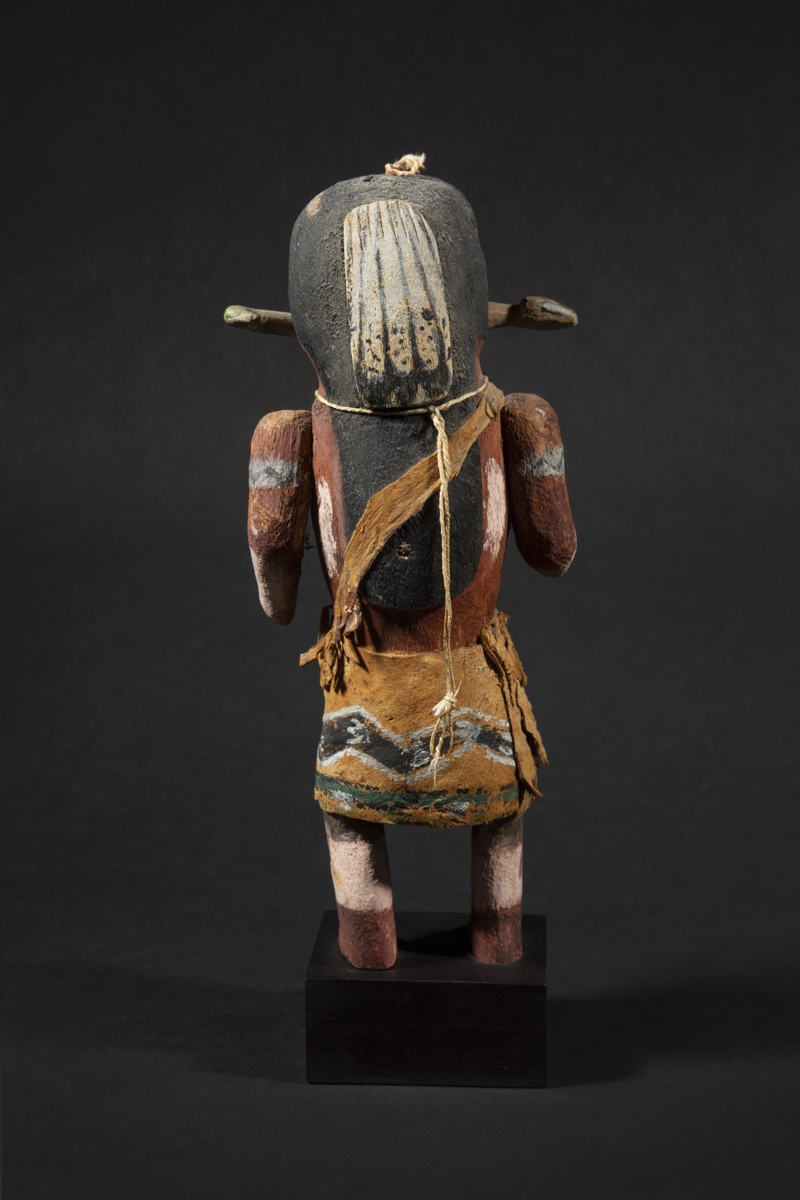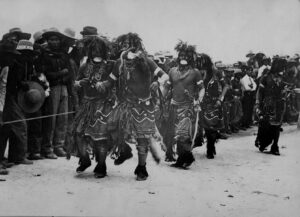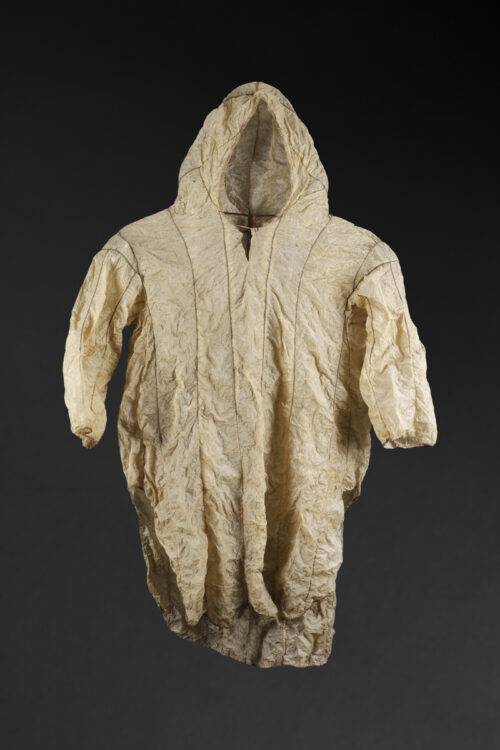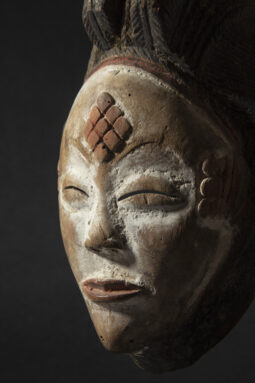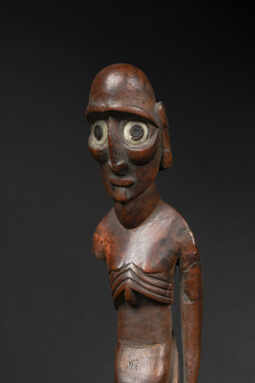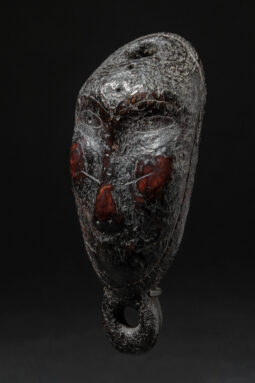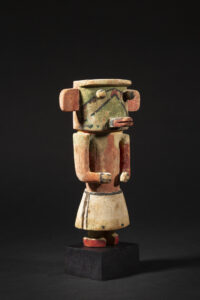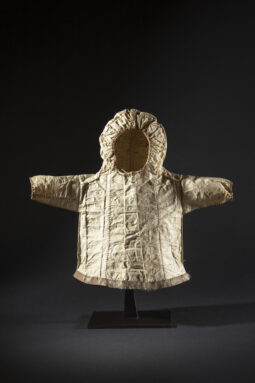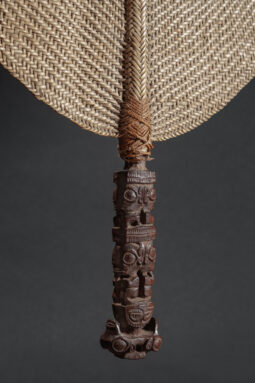North America | Arizona
Kachina doll
Arizona
Chusona Katsina – Snake Priest figure
Hopi
Circa 1890-1900
Carved wood (cottonwood), leather and pigments
Height: 26.5 cm – 10 ½ in.
Provenance
Ex collection Alan Kessler, USA
Ex Sotheby’s New York, 4 Dec. 1997 lot 24
Ex collection Galerie Flak, Paris
Ex private collection, France
Publication
“Hopi Katsina, 1600 artists biographies”, Gregory Schaaf, 2008, page 23
Chusona Kachina 26 cm / Galerie Flak
Price on request
Kachina dolls (or katsinam) represent spirits or gods from the pantheon of the Pueblo peoples in the American Southwest. Given to children, kachina dolls constituted a teaching tool allowing them to familiarize themselves with the spiritual world and perpetuating knowledge of the founding myths on which their society was based.
This figure is a representation of Chusona, the Snake Priest Dancer.
Because snakes resemble lightning and as such are associated with rain they form an integral part of the Snake Dance which occurs in August, after the close of the Kachina season. The ceremony is performed in early August which is the time of the summer rains and hence it is usually accompanied by a downpour. There is a strong war association in this society as well.
Snakes were caught and kept in the kiva, the ceremonial sacred room, by the Hopis before the ceremonies. Prior to the Snake dance, the Hopis would use smoke to induce sleep or slight unconsciousness to the snakes. They would later hold the snakes in their mouths and perform the ritual dances.
The pioneering ethnologist Abraham Moritz (Aby) Warburg (1866-1929) traveled through Pueblo Indians lands, staying notably with the Hopi between 1895 and 1896. He was the first Westerner to attend and study the Snake ceremony.
A. Warburg observed that during these rituals, nature was not invoked by means of chants or masked dances, but symbolically provoked by a rattlesnake, transformed by magical manipulations and turned into a storm catalyst, dispensing beneficial rain.
Subsequently, many ethnologists and collectors became fascinated by this ceremonial cycle. André Breton (whose collection included a Kachina Chusona figure of the Snake Dancer) had the opportunity to attend one of these dances at Mishongnovi in 1945.
An exceedingly rare footage of a Snake Dance ceremony was released by British Pathé in 1932 (see below).
According to Barton Wright, « In August of each year, the most widely known of all Hopi ceremonials is conducted in the villages... Like all major Hopi ceremonials it is a cluster of concepts or purposes. Primarily it is a rain-making and corn growing rite. It occurs late in summer when rains are necessary for the maturation of corn and at a time when the probability of rain is at its greatest. There is a strong militaristic flavor associated with the symbols marked on the dancers for they represent Pookanghooya, the little War God, and traditionally used by Hopi warriors in battle. Additionally, the ceremony contains a mortuary aspect in that deceased members of the society are represented on the Snake altar (...)
The form of the dance on the final day brings a line of Antelope Priests and Snake Dancers facing each other in two lines while singing. At the conclusion of the song the Antelope Priests remain in position singing and rattling while the Snake Dancers pair off. The rear man in the pair places his left hand on the left shoulder of the one in front and together they dance forward to a covered bower. Here the forward man kneels and receives a snake which he holds between his lips as he rises and continues to dance ».
This figure is a representation of Chusona, the Snake Priest Dancer.
Because snakes resemble lightning and as such are associated with rain they form an integral part of the Snake Dance which occurs in August, after the close of the Kachina season. The ceremony is performed in early August which is the time of the summer rains and hence it is usually accompanied by a downpour. There is a strong war association in this society as well.
Snakes were caught and kept in the kiva, the ceremonial sacred room, by the Hopis before the ceremonies. Prior to the Snake dance, the Hopis would use smoke to induce sleep or slight unconsciousness to the snakes. They would later hold the snakes in their mouths and perform the ritual dances.
The pioneering ethnologist Abraham Moritz (Aby) Warburg (1866-1929) traveled through Pueblo Indians lands, staying notably with the Hopi between 1895 and 1896. He was the first Westerner to attend and study the Snake ceremony.
A. Warburg observed that during these rituals, nature was not invoked by means of chants or masked dances, but symbolically provoked by a rattlesnake, transformed by magical manipulations and turned into a storm catalyst, dispensing beneficial rain.
Subsequently, many ethnologists and collectors became fascinated by this ceremonial cycle. André Breton (whose collection included a Kachina Chusona figure of the Snake Dancer) had the opportunity to attend one of these dances at Mishongnovi in 1945.
An exceedingly rare footage of a Snake Dance ceremony was released by British Pathé in 1932 (see below).
According to Barton Wright, « In August of each year, the most widely known of all Hopi ceremonials is conducted in the villages... Like all major Hopi ceremonials it is a cluster of concepts or purposes. Primarily it is a rain-making and corn growing rite. It occurs late in summer when rains are necessary for the maturation of corn and at a time when the probability of rain is at its greatest. There is a strong militaristic flavor associated with the symbols marked on the dancers for they represent Pookanghooya, the little War God, and traditionally used by Hopi warriors in battle. Additionally, the ceremony contains a mortuary aspect in that deceased members of the society are represented on the Snake altar (...)
The form of the dance on the final day brings a line of Antelope Priests and Snake Dancers facing each other in two lines while singing. At the conclusion of the song the Antelope Priests remain in position singing and rattling while the Snake Dancers pair off. The rear man in the pair places his left hand on the left shoulder of the one in front and together they dance forward to a covered bower. Here the forward man kneels and receives a snake which he holds between his lips as he rises and continues to dance ».
Explore the entire collection
